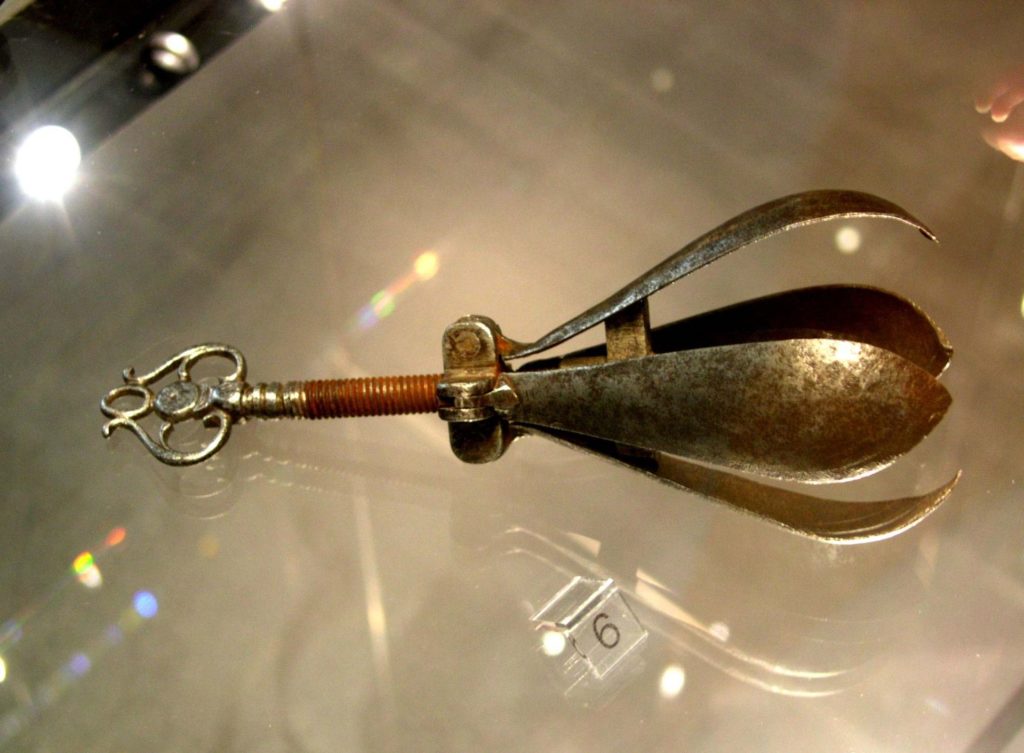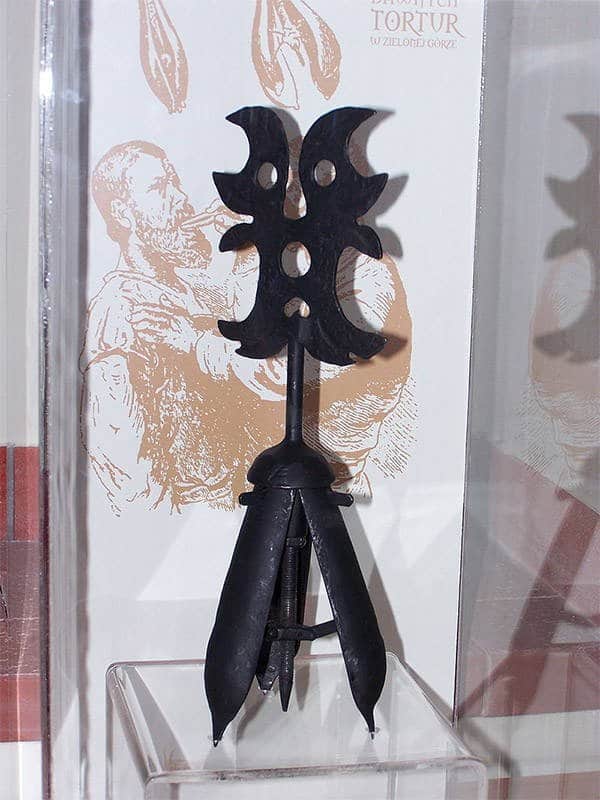Last updated on December 17th, 2022 at 08:25 pm
Pear of Anguish was a torture device commonly believed to extract confessions from criminals during the medieval era. It was inserted into the victim’s mouth and then expanded, causing immense pain. Many believe the brutal torture device was used for centuries and caused immense suffering to its victims.
Historians, on the other hand, don’t share this view. In this blog post, we will take a closer look at the history of the Pear of Anguish and how it became a symbol of medieval torture.

The Middle Ages – An Era Of Torture Devices
It’s unclear why this period was so fascinated with torture devices, but many different types of torture devices were used during the Middle Ages. This lasted about 1,000 years and was often regarded as the Dark Ages. It was defined by periods of great political upheaval and violence.
Perhaps there was no other way, but the Dark Ages gave rise to some potentially dark torture methods. Some devices targeted men, while others were specifically meant for women. But no matter your gender, no one was safe from the terror of these devices.
People used the Pear of Anguish during the Middle Ages when torture devices were commonplace. Torture devices were seen as a legitimate way to extract confessions from criminals and obtain information from enemies.
Torture devices such as the Pear of Anguish inflicted pain on victims to make them confess to their crimes. Torture devices were seen as an acceptable form of punishment during the Middle Ages.
The Pear of Anguish was just one of many torture devices used during this period. Others included the Rack, the Thumbscrew, the Breast Ripper, and the Iron Maiden. All of these devices were designed to cause immense suffering to their victims. They were all ruthless and inhumane.
The Pear of Anguish – A Torture Device That Was Used to Extract Confessions
As we mentioned, some believe The Pear of Anguish was a torture device used to extract confessions from criminals. The instrument was pear-shaped, and the body of the pear was made up of four metal “leaves” joined at the hinge at its top.
Usually, these devices had a crank or key on end. Depending on the nature of the crime, the Pear of Anguish was inserted into different orifices.

Those convicted as heretics received the “Choke Pear,” also known as in the throat. It was inserted into the victim’s mouth and then expanded, causing immense pain.
As one can imagine, officials consecutively used other pears on homosexuals and witches. Expanding the leaves would cause terrible, long-lasting damage to the victim.
As horrible as this torture device sounds, it was not meant to kill its victims; humiliation and extreme torment were definitely the results. In the case of heretics, the victim’s jaw would be dislocated, and their cheeks would be ripped open.
The Truth About The Pear Of Anguish
When one thinks about the Pear of Anguish, it can only fill them with nightmarish dread, but upon further inspection of these devices, there may be another explanation that describes their true purpose.
For instance, an Australian historian named Chris Bishop took an example of the Pear from a museum and studied its construction.
His research revealed that objects that could only be described as the Pear of Anguish started to appear around the mid-19th century. In addition, there is a historical reference to a well-known criminal in Paris during the 17th century.
At the time, this criminal was notorious for using a device designed for him that allowed him to gag his victims. Yet beyond that practice, there seems to be no mention of a torture device like the Pear from the Middle Ages. Bishop goes on to say that upon examining the “Choke Pear” in person, he concluded that people could never use the device for the specific brand of torture it was used for.
For starters, the springs in the devices’ construction were far too weak to open a bodily orifice to cause damage. Aside from that, the latch was designed so that it could not be opened if it was inside something.
Bishop mused that the device could have been used as a surgical instrument like a speculum or a device that left the mouth open for a Dentist to do their work. But, on the other hand, the Pear could have easily been a shoe-extender, sock-stretcher, or a glove-widener.
More info about the Pear suggests that it didn’t even exist until the 17th century if it did at all. So perhaps the idea of the torture device was simply something robbers used on their victims to keep them talking to the law. They would insert the device, expand it if possible, and bribe the victim into paying them to remove it.
Does That Mean That Torture Didn’t Exist In the Middle Ages?
Of course not; torture was still a part of Medieval society. In the later years of the Middle Ages, torture was undoubtedly an acceptable practice used to extract information and force a confession.
It was unlikely that people of the Middle Ages were creative enough to create their punishments, as people are led to believe.
However, the Pear of Anguish may not have been the diabolical torture device but more a nuisance created by a genuinely depraved individual.
The idea of the Pear is terrible, adding potentially grotesque sexual violation and physical pain caused by the torture itself.
Fortunately, it seems that the Pear of Anguish didn’t exist in the horrible context spread by the rumor mill. However, while the Pear of Anguish didn’t exist and seems to be a device limited to someone’s imagination, we find that the Middle Ages is still rife with incidences of cruel punishment.

